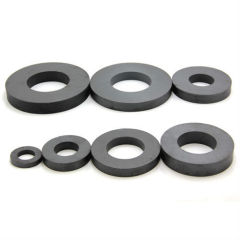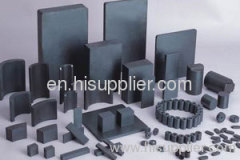
Sintered hard ferrite magnets
0.1~50.0 USD
| Min. Order: | 100 Piece/Pieces |
|---|---|
| Payment Terms: | L/C, T/T |
| Place of Origin: | Zhejiang |
Company Profile
| Location: | Ningbo, Zhejiang, China (Mainland) |
|---|---|
| Business Type: | Manufacturer |
| Main Products: | Ndfeb Rare Earth Magnet, Hard Ferrite Magnets, Ring Sintered Alnico Magnet, SmCo, Flexible Magnets |
Product Detail
| Model No.: | F005 |
|---|---|
| Means of Transport: | Ocean, Air |
| Specification: | strong magnetized |
| Shape: | any size |
| Material: | Ferrite magnets |
| Grade: | Y10T,Y25,Y30... |
| Packing: | paper box |
| Delivery Date: | 15 days |
Product Description
Hard Ferrite magnet:
Ferrite magnet sometimes called as ceramics are electrically non-conductive magnets which is manufactured since 1954. It consists of iron oxides such as Hematite (Fe2O3) or Magnetite (Fe3O4) with traits of other oxides. Though with respect to other magnets they provide less energy they are very stable and high resistance to demagnetization. They have high permeability and in saturated state they conduct a magnetic flux which allows them to store stronger magnetic fields than iron.
Properties
Properties
- The ferrite ceramic magnets are resistant to demagnetization.
- These sintered permanent magnets are categorized into two parts on the basis of the applications- electromagnets and permanent magnets.
- These sintered permanent magnets show less coercivity.
- The ferrite ceramic magnets are brittle and are prone to breakage. Due to their brittle nature they cannot be drilled or machined.
- Excellent resistant to corrosion.
- Very good temperature stability.
Applications
Ferrite magnets have following applications:
Ferrite magnets have following applications:
- Electronic inductors
- Computers
- Loud speakers
- In radar as absorbing particles
- Industrial automation
- Conveyor belts
- Electric motors
- Magnetic separators
- Magnetic resonance imaging
Process
Ferrite Magnets are manufactured by using two process:
Ferrite Magnets are manufactured by using two process:
- Dry Process
- Wet Process
Using dry process, isotropic & anisotropic magnets can be produced whereas through wet process, only anisotropic magnets can be produced. Isotropic ferrite magnets can be magnetized in any direction because they are not oriented whereas anisotropic ferrite magnets can be be magnetized in the direction of orientation as they are all oriented in the manufacturing direction.


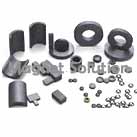
.jpg)
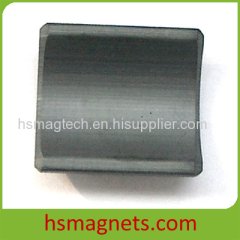
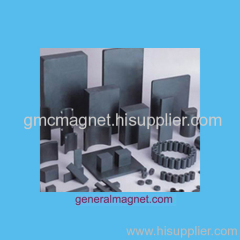
.jpg)
